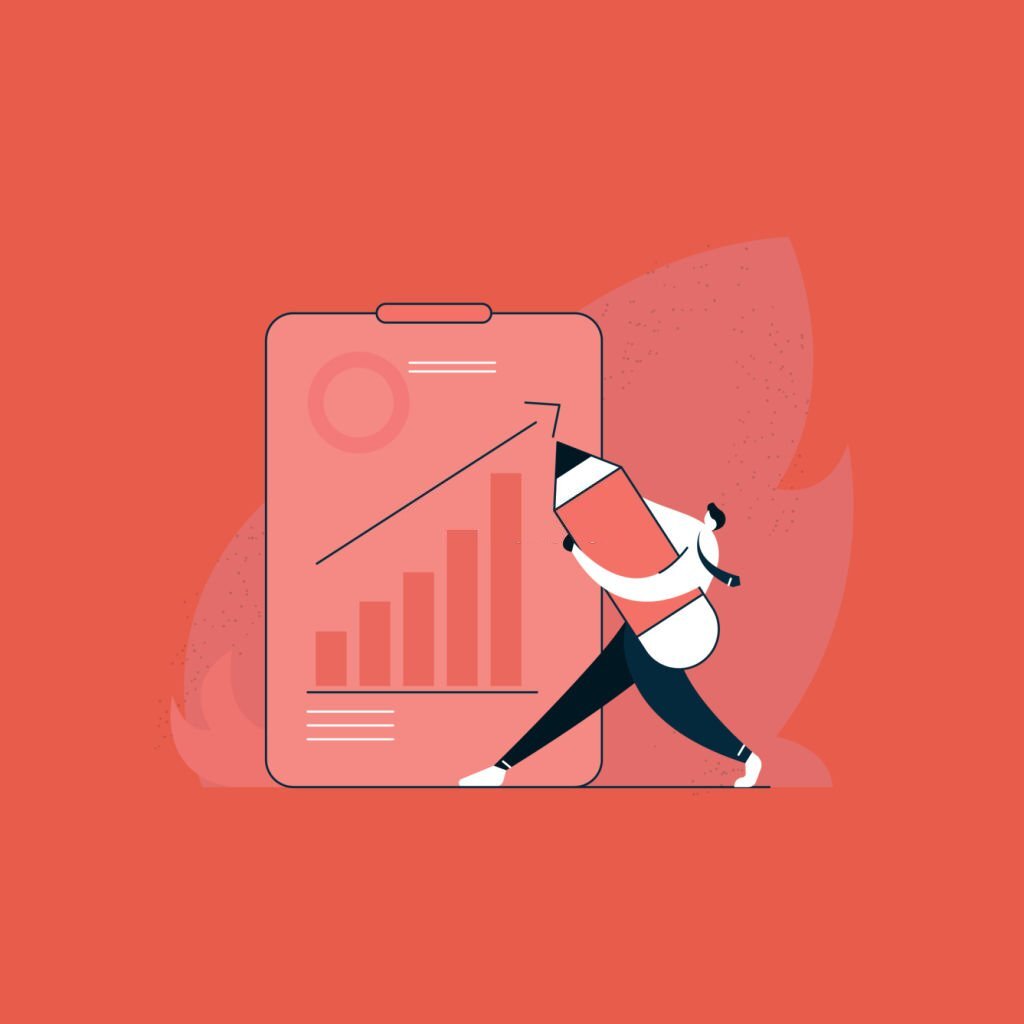Influencers are otherwise known as key-opinion leaders or trend setters. Why haven’t they lost their buzz?
One of the proofs that brands are realizing the importance of influencer marketing is this stat that shows the value of influencer marketing rising from $6 billion in 2020 to $13 billion in 2022. This will only see an upward curve because according to an Influencer Marketing report, the industry will inflate even more and reach 2,200 crores by 2025. There are 2 million content creators for every niche across India and there is still room for growth.
Why is influencer marketing effective?
Before discussing the trends let’s take a quick but important detour on why influencer marketing is effective.
Influencers are experts in creating content that express themselves in a way that their audience could relate to and enjoy. Their content is often rewarded with the trust of their audience. The brands that are interested in creating awareness of their product leverage the community, connection, and trust that the influencer has already built instead of the brand having to start everything from scratch.
Influencer marketing trends in 2022
1. Updated profile
Before approaching an influencer, the first thing to ensure is that your profile has been updated. You can never go wrong in having a creative logo design and a crisp bio with keywords that explain your brand in the most attention-grabbing way possible.
2. The 3 capital R’s
We cannot emphasize more the importance of choosing the right influencer for your brand. Here’s how you do it.
- Reach: The number of followers is not proportional to success. It is only based on the engagement rate their posts receive in the forms of likes, comments, and shares.
The easiest way to calculate that in case you don’t have access to viewing their reach is to divide the amount of engagement by follower count and multiply the result by 100
- Resonance: This is where you check if the influencer can create content for their audience that resonates with your brand.
- Relevance: Ask yourself, do they have a niche audience that your brand needs?
3. Longer partnerships
Rule of seven is really getting to stick with influencer marketing and it’s showing through longer partnerships. It takes seven times or seven posts for a consumer to take some action. It is no longer just one story or one post.
2021 was the testing phase and 2022 is all about a longer partnership. Brands were excited to try influencer marketing for a change and now that brands have found the right influencers and the right type of content they want a longer-partnership with their audience’s favourite influencer.
4. Rise of micro and nano influencers
It is a win-win solution for both the influencer as well as the brand when they collaborate with micro and nano influencers Micro-influencers have less than 25k followers and nano influencers have less than 10k followers but are niched followers. Their engagement rate is 7% which is more than the 2% engagement rate that the mega-influencers have.
73% of the influencers are micro, nano, and mid-tier influencers, and hardly 27% of the celebrities are involved in influencer marketing.
Brands could benefit from collaborating with more than one micro or nano-influencer simultaneously because there are more of these influencers who are willing to work with brands and they are cost-efficient with more reach and engagement.
5. Instagram reels and TikTok
Why do reels ads have the potential to reach 675.3 million users and why are brands getting more comfortable with TikTok videos and Instagram reels?
Because Instagram reels had grown on millennials and their short attention span. This has brought us to the undeniable fact that audiences love content that is informative and short.
Consumers find it promising when they catch a glimpse of reels or TikTok icons and the chances of consumers skipping these videos are far less because they know they would get entertained as well as absorb the content in 15 seconds.
A survey states that reels get 22% more engagement than regular videos and posts. A meta report shows that 53% of men and 49% of women share Instagram reels ads.
6. Inspire the audience
“Nothing sticks in your head better than a story.”
Influencers reached fame by sharing their personal stories. It is not any different for brands. Here’s where the brands should make use of their creativity to create a buzz for their products and services. Just creating an ad with the intention of showcasing your product will only create a deep disinterest.
One of the best ways to get the consumers to engage is by using a success story or testimonial. The audience adores behind the scenes and a day in the life of a team member. This would give them a feeling as if they are part of the team. There is no harm in posting these stories on multiple channels.
7. Spot fake accounts and ghost accounts
Now there are two types of fake accounts when it comes to influencer marketing.
- It could be the followers of an influencer who had brought bot followers.
- It could be imposter accounts that impersonate your brand.
Both of these could sabotage the brand’s relationship with the target audience and could lead to an ineffective campaign.
Ghost accounts are followers who follow an influencer but never engage.
Identifying genuine followers and engagement rates before collaborating is a wise decision.
8. Curating vernacular content
About 210 million people in India talk in their vernacular language. Brands have started to narrow down and are much more specific in finding out influencers who are niched and can produce content in their target audience’s regional language.
This has taken the process of creating trust to another level as the followers find it easier and better to trust the content creator of their same language. 70% of millennials trust their influencer’s advice when purchasing.
9. Consistency
Having a consistent schedule drives more engagement. Posts shouldn’t be too often to give the audience ad fatigue and not posting for several days in a row would give a negative impact on the engagement rate.
The number of posts for Instagram per week should be around 3 to 7 times, 1 or 2 times for Facebook, and 1 to 5 times for Twitter and LinkedIn.
10. Fun and engaging challenges, hacks, and DIYs
People love learning things online and they adore the fun challenges that their influencers post. Having a week-long challenge is short, doesn’t take much of the audience’s bandwidth, and is very engaging. Over the week your target audience would learn more about your brand.
This works well when a learning component is attached to the brand, for example, cooking, coaching mindfulness or yoga or any physical activity, or vitamin supplements and personal care products that claim to give results in a short period of time.
11. Live Streaming
Pandemic paved the way for the fame of live-streaming. It is a good way to showcase product demos. Audiences love interacting with their favorite influencers in real-time. Get ready with me live streams by influencers are quite popular.
12. Collabs using NFTs
NFTs are effortless to use for collabs. NFTs enable complete disclosure for payment beneficiaries. On having access to NFTs one can add multiple blockchain and wallet addresses and accounts. You can easily track the payments since NFTs have the feature to store each sale data in its blockchain.
13. Researching competitor’s ads
In an Instagram survey, 81% of participants claimed to have used the platform for product and service research. You do want to find these consumers before your competitors do, don’t you?
You can make the most of Instagram’s 1 billion active users each month by making a fantastic advertisement that will catch their attention and expand your following. The secret to creating a successful Instagram ad is to find out what is working for your opponents. Then, you can save yourself time and effort by using their successful tactic with a twist of your own.
- Instagram and Facebook competitor
Instagram is owned by Facebook. There are two approaches to spot the active Facebook and Instagram ads of your competitor.
- Start by launching the Ad Library on your browser as your first option. This will direct you to a webpage where you can enter the name of your competitor after selecting an area and an ad type.
- Through their Facebook profile, you may also access the advertisements of your competitors. Click See All in the Page Transparency box found in the sidebar.
You must filter the ads in the Ad Library after you’ve viewed those of your competitors to see only those that are now appearing on Instagram or Facebook.
Conclusion
Here’s a little spoiler. Influencer marketing is only going to grow and here’s the proof. A report of INCA has revealed a breakdown of influencers in top categories which says there is a 25% of influencers in personal care and cosmetics, 20% in food, 15% in fashion accessories, and 10% in gadgets. This accounts for 70% of the influencer’s population.
A well beginning is half done and so is choosing the right influencer. Brands want the content to showcase their product and influencers have content. It is easier for brands to use that content rather than for them to DIY their way through it. Brands could browse influencers based on the content that matches their brand and please the audience.
Don’t be overwhelmed by the number of insights and ideas. Start slow. Baby steps will gradually help you run and then fly.




